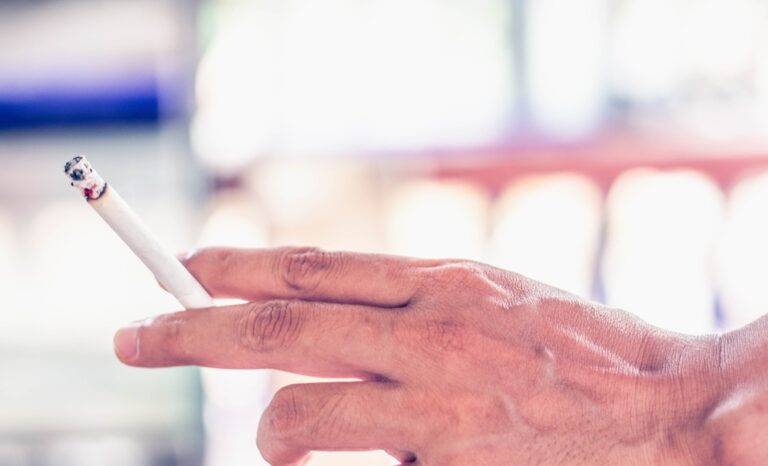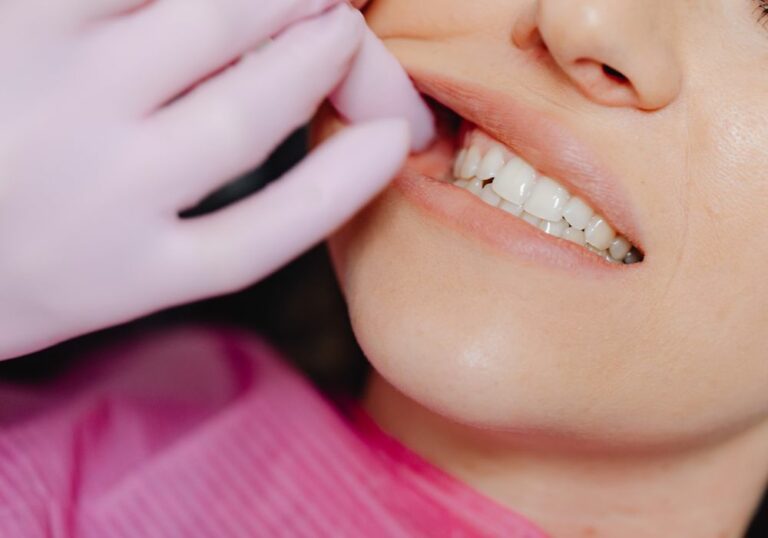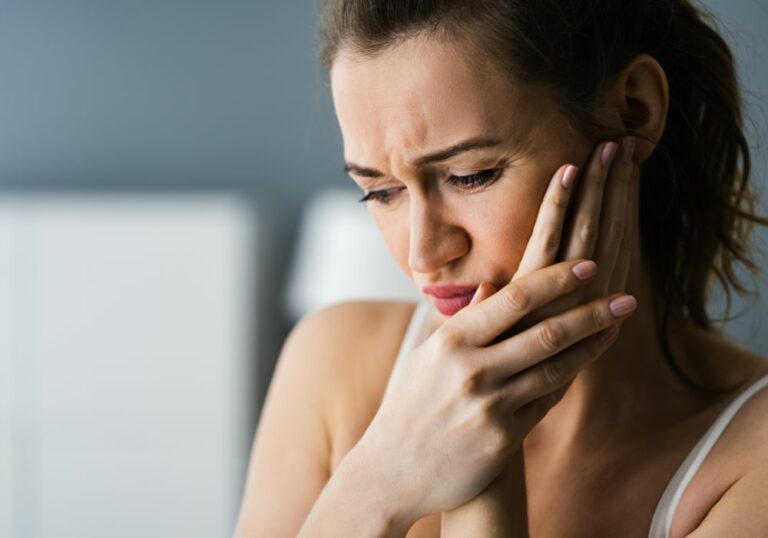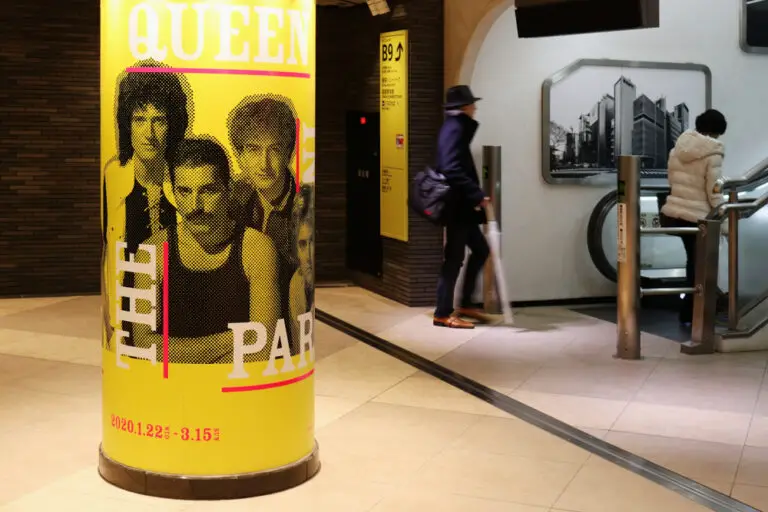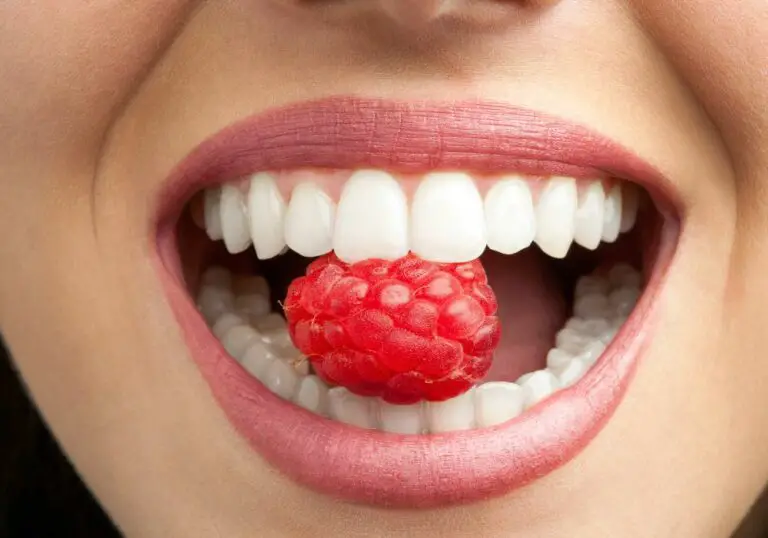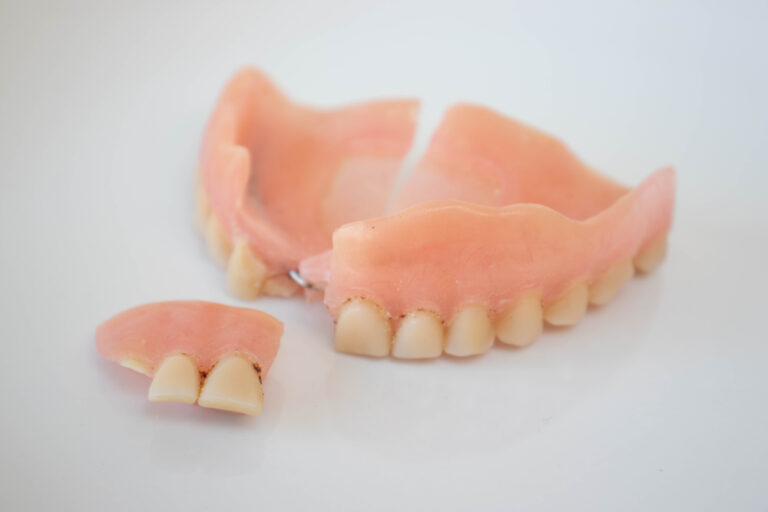Are you wondering if you can eat after using teeth whitening strips? The answer is yes, but there are some things you should keep in mind to ensure that you don’t interfere with the whitening process or stain your teeth.
Foods that are neutral or white-colored are generally safe to consume after using teeth whitening strips. These include chicken, fish, potatoes, pasta, bananas, and cauliflower. However, it’s best to avoid colorful meals or drinks for at least two hours after using the strips to prevent staining. Drinking water can also help to wash away any residue and keep your teeth clean.
It’s important to be mindful of what you eat and drink after using teeth whitening strips to maintain a bright smile. While you don’t have to completely avoid your favorite foods, it’s best to stick to neutral or white-colored options and avoid anything that could potentially stain your teeth. With a little bit of care, you can enjoy your meals while still achieving the results you desire from your teeth whitening treatment.
Understanding Teeth Whitening Strips
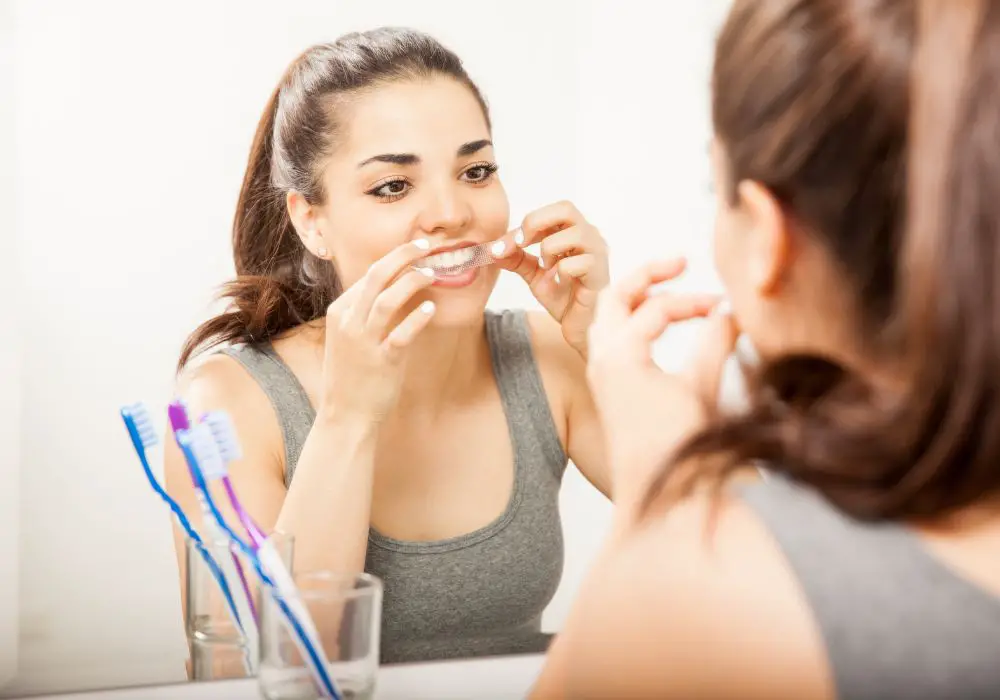
Teeth whitening strips are a popular and convenient way to achieve a brighter smile at home. These strips are made of a thin, flexible material that is coated with a whitening gel containing hydrogen peroxide or carbamide peroxide. They are placed directly onto the teeth and left on for a specified amount of time, usually around 30 minutes, before being removed.
While teeth whitening strips can be effective, it’s important to understand how they work and how to use them properly to avoid any potential risks or side effects.
How Teeth Whitening Strips Work
The active ingredient in teeth whitening strips, hydrogen peroxide or carbamide peroxide, works by breaking down the stains on the surface of the teeth. The peroxide molecules penetrate the enamel and react with the discolored molecules, breaking them down into smaller, less visible particles.
Over time, with regular use, the teeth become brighter and whiter. However, it’s important to note that teeth whitening strips are not a permanent solution and will need to be used regularly to maintain the results.
Using Teeth Whitening Strips Safely
To use teeth whitening strips safely and effectively, it’s important to follow the instructions carefully. Here are some general tips to keep in mind:
- Choose a reputable brand of teeth whitening strips that has been approved by dental professionals.
- Avoid using teeth whitening strips if you have any dental problems, such as cavities or gum disease. Consult with your dentist before using them.
- Stick to the recommended application time and frequency. Using teeth whitening strips too often or for too long can cause sensitivity and damage to the enamel.
- Avoid eating or drinking anything that could stain your teeth immediately after using teeth whitening strips. Wait at least 30 minutes before eating or drinking anything.
- If you experience any sensitivity or discomfort while using teeth whitening strips, stop using them immediately and consult with your dentist.
By following these guidelines, you can safely and effectively use teeth whitening strips to achieve a brighter, more confident smile.
What Happens After Using Teeth Whitening Strips
After using teeth whitening strips, you may experience tooth sensitivity. This is because the peroxide in the strips penetrates the enamel to bleach the teeth. The peroxide can cause irritation to the nerves in the teeth, resulting in sensitivity. However, this is usually temporary and should subside within a few days.
It is important to note that using teeth whitening strips too frequently or leaving them on for too long can cause damage to the enamel and gums. Always follow the instructions on the packaging and do not exceed the recommended usage.
After using teeth whitening strips, you should avoid eating or drinking anything that may stain your teeth for at least two hours. This includes coffee, tea, red wine, and dark-colored fruits and vegetables. Instead, opt for neutral or white-colored foods such as chicken, fish, potatoes, pasta, bananas, and cauliflower.
Brushing your teeth immediately after using teeth whitening strips is not recommended as it may cause gum irritation. Wait at least 30 minutes before brushing your teeth to allow the enamel to re-harden.
If you experience prolonged tooth sensitivity or gum irritation after using teeth whitening strips, consult your dentist. They may recommend a different whitening treatment or provide advice on how to manage the sensitivity.
Eating After Teeth Whitening Strips

If you’ve recently used teeth whitening strips, you may be wondering what you can eat without compromising the results of the treatment. Here are some guidelines to follow for eating after teeth whitening strips.
Immediate Aftercare
After using teeth whitening strips, it’s important to avoid eating anything that could stain your teeth for at least an hour. This includes coffee, tea, red wine, and dark-colored fruits and vegetables. Additionally, you should stick to softer, less abrasive foods for the first day or two to minimize sensitivity.
Foods to Avoid
To maintain the effects of your teeth whitening treatment, it’s best to avoid certain foods and drinks that can cause discoloration. Here are some examples of what to avoid:
- Coffee, tea, and other dark-colored beverages
- Red wine
- Dark-colored fruits and vegetables, like berries and beets
- Tomato-based sauces
- Soy sauce
- Balsamic vinegar
Safe Foods to Eat
Here are some safe and gentle foods to eat after using teeth whitening strips:
- Yogurt
- Soft fruits, like bananas and peaches
- Cooked vegetables, like carrots and squash
- Smoothies
- Soup
- Oatmeal
- Scrambled eggs
Remember, it’s important to be gentle with your teeth for the first few days after using teeth whitening strips. Stick to soft, non-abrasive foods and avoid anything that could stain your teeth. With proper aftercare, you can maintain a brighter, whiter smile for longer.
How to Maintain Whitened Teeth
Maintaining your newly whitened teeth is just as important as the teeth whitening process itself. Here are some tips on how to keep your teeth looking their best:
Oral Hygiene Practices
Maintaining good oral hygiene practices is essential for keeping your teeth white and healthy. Here are some practices you should incorporate into your daily routine:
- Brush your teeth at least twice a day with a whitening toothpaste.
- Floss daily to remove any food particles that may be stuck between your teeth.
- Use mouthwash to kill any bacteria in your mouth and freshen your breath.
- Avoid smoking or using any tobacco products, as they can stain your teeth.
Regular Dental Check-Ups
Regular dental check-ups are crucial for maintaining your oral health and keeping your teeth white. Here are some reasons why:
- Your dentist can identify any potential problems early on and treat them before they become more serious.
- Your dentist can clean your teeth and remove any surface stains that may have accumulated since your last visit.
- Your dentist can provide you with additional tips on how to maintain your newly whitened teeth.
By following these tips, you can maintain your newly whitened teeth and keep them looking their best for years to come.
Possible Side Effects of Teeth Whitening Strips

Teeth whitening strips are a popular and convenient way to brighten your teeth at home. They are easy to use and can provide noticeable results in just a few days. However, like any dental treatment, there are possible side effects that you should be aware of before using them.
Tooth Sensitivity
One of the most common side effects of teeth whitening strips is tooth sensitivity. This can occur when the peroxide in the strips penetrates the enamel and reaches the dentin, which contains nerve endings. You may experience a sharp, shooting pain when eating or drinking hot or cold foods and beverages.
To minimize tooth sensitivity, it is important to follow the instructions carefully and not leave the strips on for longer than recommended. You can also try using a toothpaste designed for sensitive teeth or applying a desensitizing gel to your teeth before using the strips.
Gum Irritation
Another possible side effect of teeth whitening strips is gum irritation. This can occur when the strips come into contact with your gums and cause them to become red, swollen, or tender. This is more likely to happen if you have receding gums or if you leave the strips on for too long.
To avoid gum irritation, make sure to apply the strips only to your teeth and not your gums. You can also try trimming the strips to fit your teeth more precisely and avoid overlapping onto your gums. If you do experience gum irritation, stop using the strips and consult your dentist.
In conclusion, while teeth whitening strips can provide a quick and easy way to brighten your smile, it is important to be aware of the possible side effects. By following the instructions carefully and taking steps to minimize tooth sensitivity and gum irritation, you can safely achieve a whiter, brighter smile.
Frequently Asked Questions
How soon after using whitening strips can I eat?
After using whitening strips, it’s best to wait at least 30 minutes before eating or drinking anything. This will give the whitening agent enough time to settle into your teeth and provide the desired effect.
Should I wait to eat or drink after using whitening strips?
Yes, it’s recommended to wait at least 30 minutes before eating or drinking anything after using whitening strips. This is because the whitening agent needs time to penetrate your teeth and provide the desired effect. Eating or drinking too soon after using the strips may reduce their effectiveness.
Can I brush my teeth immediately after using whitening strips?
No, it’s not recommended to brush your teeth immediately after using whitening strips. This is because the whitening agent can make your teeth more sensitive, and brushing immediately after using the strips can cause further irritation. It’s best to wait at least 30 minutes before brushing your teeth.
How often should I use whitening strips?
It’s recommended to use whitening strips once a day for two weeks to achieve the desired results. However, it’s important not to overuse them as this can damage your teeth and cause sensitivity.
When is the best time of day to use whitening strips?
The best time of day to use whitening strips is usually before bed. This is because you won’t be eating or drinking anything for several hours, which allows the whitening agent to work more effectively.
How long does it take for whitening strips to work?
Whitening strips usually take around two weeks to work. However, the results may vary depending on the individual and the severity of the staining. It’s important to follow the instructions carefully and not to overuse the strips to avoid damaging your teeth.

